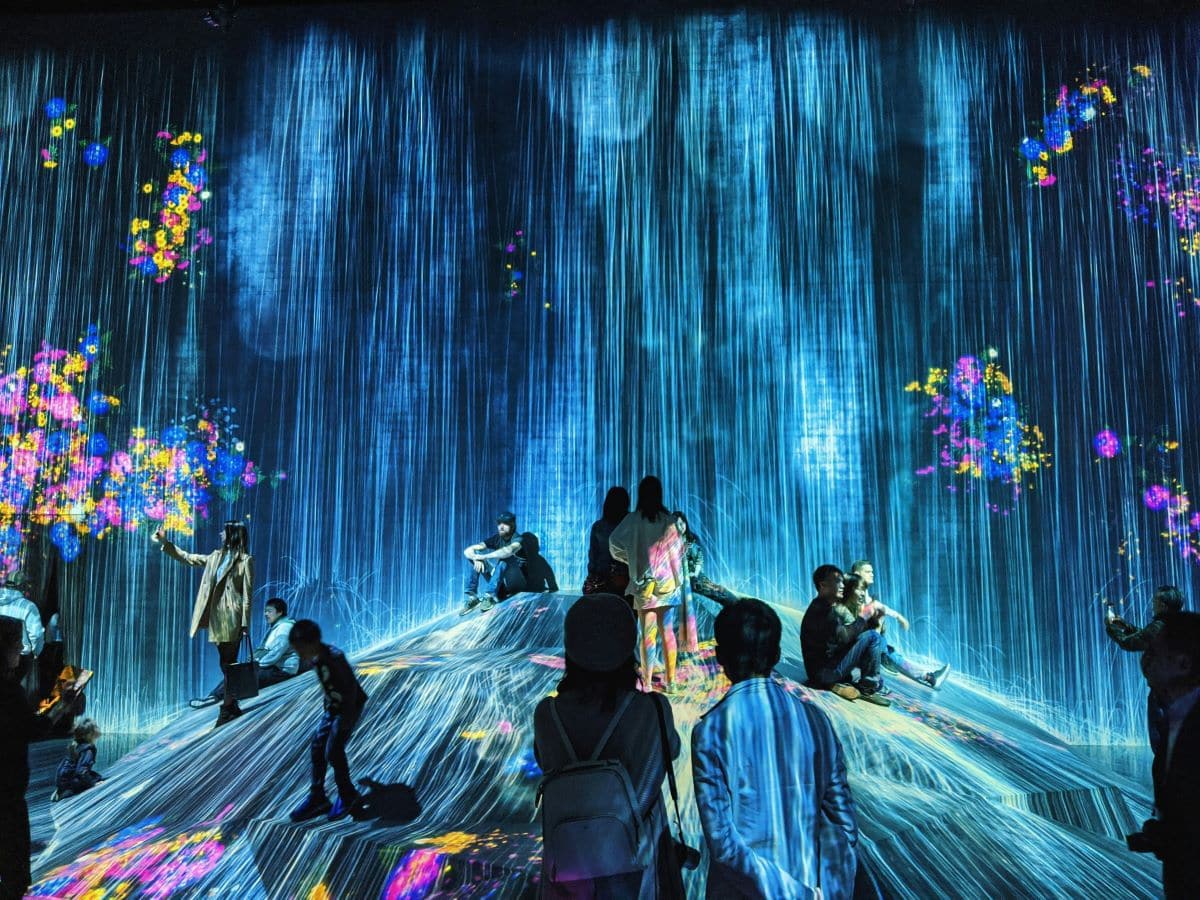What is Digital Art vs Traditional Art
Art has always been a reflection of the times, evolving alongside the technological advancements of each era. From the cave paintings of ancient civilizations to Renaissance masterpieces, artists have continuously embraced new tools and techniques to express their creativity, demonstrating the evolving nature of works of art. In the 21st century, the relationship between technology and art has undergone a significant transformation, with the rise of digital art challenging traditional notions of artistic expression and introducing a new form of art.
There is a dynamic interplay between traditional art and digital art, with questions arising about which is best, whether digital art replaces traditional artmaking, the pros and cons of traditional art methods, and ethical questions around various forms of digital art. Understanding and exploring how technology has reshaped art is a great way to dig into the topic of digital media and the evolution of traditional work, and how both fit into our artistic and human expression.
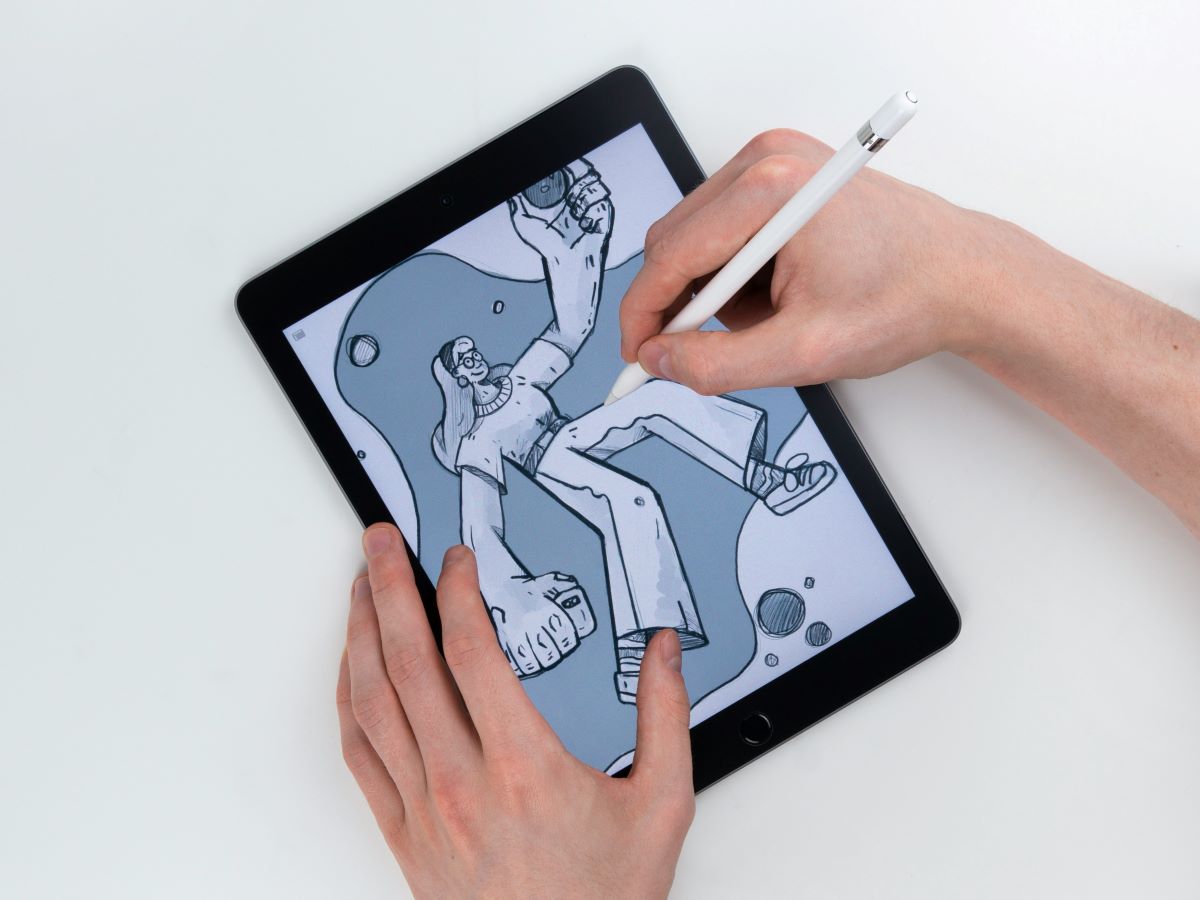
Redefining Artistic Boundaries: Digital Techniques in the Art World
Definition and Scope of Digital Art
The boundaries of artistic expression have expanded beyond the confines of traditional mediums like oil paint and canvas. Digital art refers to a wide range of mediums, including painting, computer-generated imagery (CGI), interactive installations, and virtual reality (VR). Artists harness the power of digital tools and technologies, such as drawing tablets, graphic design software, and 3D modeling programs, allowing for the creation of masterpieces with complexity and depth.
The Difference in the Digital Canvas: Tools and Technologies Shaping Digital Artistry
The canvas of digital art is as vast and versatile as the virtual landscape itself. Artists leverage a world of art tools and technologies to create their masterpieces, from sophisticated software applications to cutting-edge hardware devices. Drawing tablets, equipped with pressure-sensitive styluses, offer artists precise control over their strokes and gestures, while graphic design software enables the manipulation of images and the creation of complex visual compositions. 3D modeling programs empower artists to create digital worlds and characters with unparalleled detail and realism, blurring the lines between imagination and reality.
Evolution of Digital Art in the 21st Century
Early Pioneers and Key Developments
The journey of digital vs traditional art techniques in the 21st century traces back to early pioneers who experimented with computer-generated graphics and digital file manipulation, fundamentally reshaping what art refers to. Key developments include:
- The emergence of movements such as net art and glitch art.
- The adoption of digital devices and techniques by traditional artists merges the boundaries between digital art and traditional art.
These early experiments laid the groundwork for the democratization of artistic creation and distribution. Traditional art will always have a place in history, but there are growing concerns about the use of digital tools and their advantages over traditional art.
Exploration of Democratizing Effects
The democratizing effects of digital technology on artistic creation and distribution have revolutionized the way art is produced, consumed, and shared. Online communities and platforms have emerged as hubs for artists to showcase and sell their artworks, transcending geographical boundaries and traditional barriers to entry. Artists and traditional artwork are no longer confined to physical galleries or elite classes; instead, they can reach global audiences with the click of a button.

Traditional vs Digital: Are There Similarities?
Influence on Traditional Artmaking
Technology has profoundly influenced the forms traditional art takes, such as painting, sculpture, and photography. Artists now have access to a wide range of tools and processes that enable them to experiment with new techniques, styles, and modes of expression. Some key influences include:
- Integration of drawing tablets for sketching and preliminary studies
- Use of software for image manipulation and enhancement
- Adoption of printing techniques for reproducing and distributing artworks
These advancements have expanded the possibilities for artists to explore and push the boundaries of their work with traditional mediums.
Blurring Boundaries Between Digital and Traditional Art
As digital art is becoming increasingly popular, the distinction between the two approaches has become increasingly blurred as artists incorporate new tools and processes into their practice. Many artists work across multiple mediums, seamlessly integrating both techniques to create hybrid artworks that defy categorization. Examples include:
- Mixed-media collages combining digital and physical elements
- Sculptures created using 3D modeling software and printed with fabrication techniques
- Paintings augmented with virtual projections or interactive elements
This convergence of art forms reflects the fluidity and adaptability of contemporary art pieces.
Interactive and Immersive Experiences of Traditional and Digital Art
Engaging Viewers Through Interactivity
Interactive installations and immersive experiences have emerged as powerful tools for engaging viewers in participatory and multisensory ways. Artists leverage technology to create pieces of art that respond to viewer input, transforming passive spectators into active participants. Examples include:
- Projections that react to motion or sound
- Augmented reality (AR) installations that overlay content onto physical environments
- Virtual reality (VR) environments that transport viewers into immersive worlds
These experiences that digital art produces blur the boundaries between art and audience, inviting viewers to become co-creators of the artistic experience and heralding such installations as a transformative idea in the traditional vs digital art conversation.
Advancements in Immersive Technologies
Advancements in technology, such as motion tracking, haptic feedback, and spatial computing, are driving innovation in the realm of immersive experiences, heralding a new form of art that merges traditional techniques with cutting-edge technology. Artists are pushing the boundaries of traditional artistic mediums to create environments that stimulate the senses and evoke emotional responses. Key advancements include:
- Motion-tracking systems that enable real-time interaction with digital elements
- Haptic feedback devices that provide tactile sensations in virtual environments
- Spatial computing platforms that allow artists to create immersive narratives in three-dimensional space
These technologies are transforming the way audiences experience and interact with art, opening up new possibilities for creative expression and exploration.
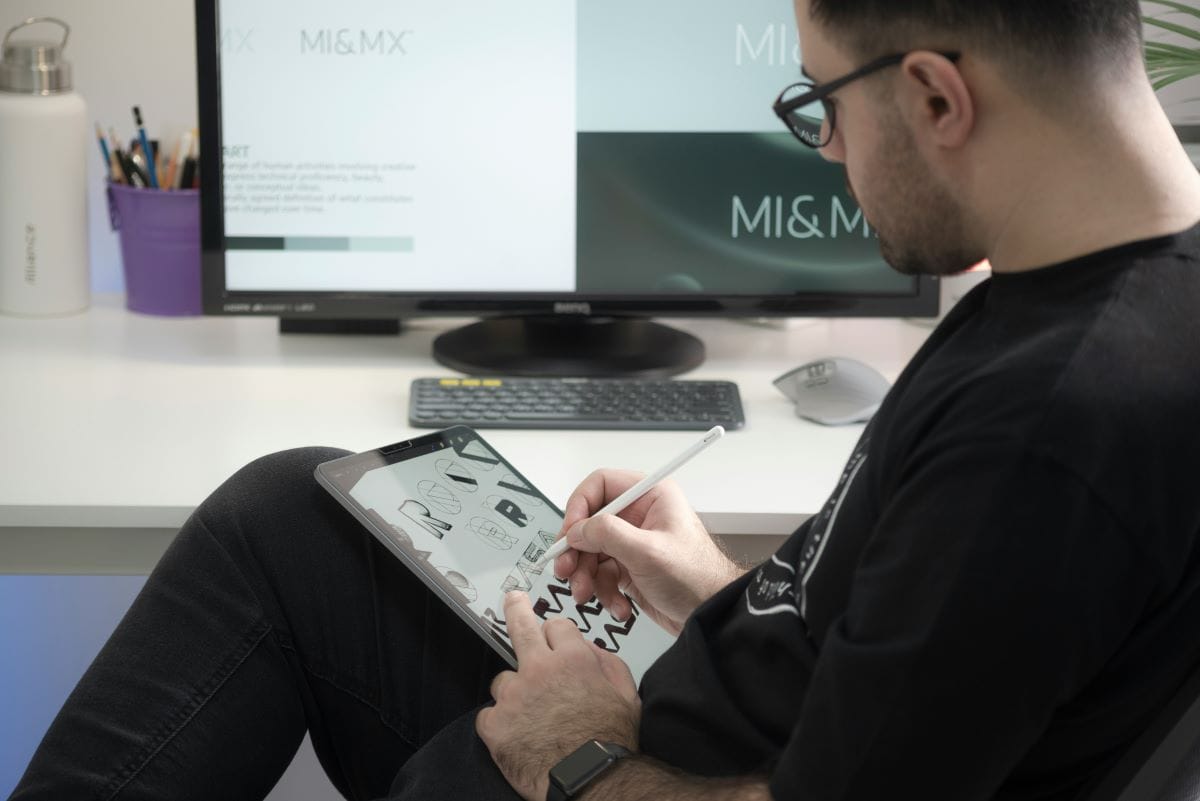
Digital Art in the Age of Social Media and NFTs
Traditional Art vs Social Media
Social media platforms have become integral to the dissemination and promotion of digital art, providing artists with unprecedented opportunities to reach global audiences and build online communities. Platforms like Instagram, TikTok, and DeviantArt have become hubs for digital artists to showcase their work, connect with fellow creators, and engage with fans. Artists leverage social media to share their creative process, solicit feedback, and collaborate with other artists, fostering a vibrant and dynamic online ecosystem for digital art.
The Emergence of Non-Fungible Tokens (NFTs)
Non-fungible tokens (NFTs) and blockchain technology have revolutionized the way digital art is bought, sold, and owned, creating a novel type of art market. NFTs provide a unique digital certificate of authenticity and ownership for digital artworks, enabling artists to monetize their creations in the digital marketplace. NFT marketplaces like OpenSea, Rarible, and Foundation have emerged as platforms for artists to sell their digital artworks directly to collectors, bypassing traditional galleries and intermediaries. The rise of NFTs has sparked a global conversation about the value of digital art, the democratization of art ownership, and the future of the art market.
Pros and Cons: Does Digital Art Take the Place of Traditional Artmaking?
Ethical Considerations and Differences Between Traditional and Digital Art
As digital art continues to proliferate in the online sphere, ethical considerations surrounding issues such as copyright, authenticity, and ownership of these new forms of art have become increasingly complex. Artists must navigate the legal and ethical implications of sharing and distributing their works of art in digital formats, ensuring that their rights as creators are protected and respected. Additionally, questions about the appropriation of digital content, the authenticity of digital signatures, and the ownership of NFTs have sparked debates within the digital art community, raising important ethical questions about the nature of creativity and authorship in the digital age.
Legal Considerations in Making Traditional Art
The legal landscape surrounding digital art is still evolving, with lawmakers and legal experts grappling with issues such as intellectual property rights, licensing agreements, and digital piracy. Artists must be vigilant about protecting their intellectual property rights and understanding the legal implications of sharing their work online. Additionally, the emergence of NFTs has raised legal questions about the enforceability of digital contracts, the regulation of blockchain technology, and the taxation of digital art transactions. As the digital art market continues to grow and evolve, artists must stay informed about their rights and responsibilities under the law.
Practical Considerations for Artists
In addition to ethical and legal considerations, artists must also contend with practical challenges related to the production, distribution, and preservation of digital art. Technical issues such as file formats, resolution, and storage can impact the quality and longevity of digital artworks. Artists must also consider the accessibility and usability that digital art requires, ensuring that their work is compatible with a variety of devices and platforms. Questions about the environmental impact of digital art production and consumption have also prompted discussions about sustainability and eco-friendly practices in the digital art industry.
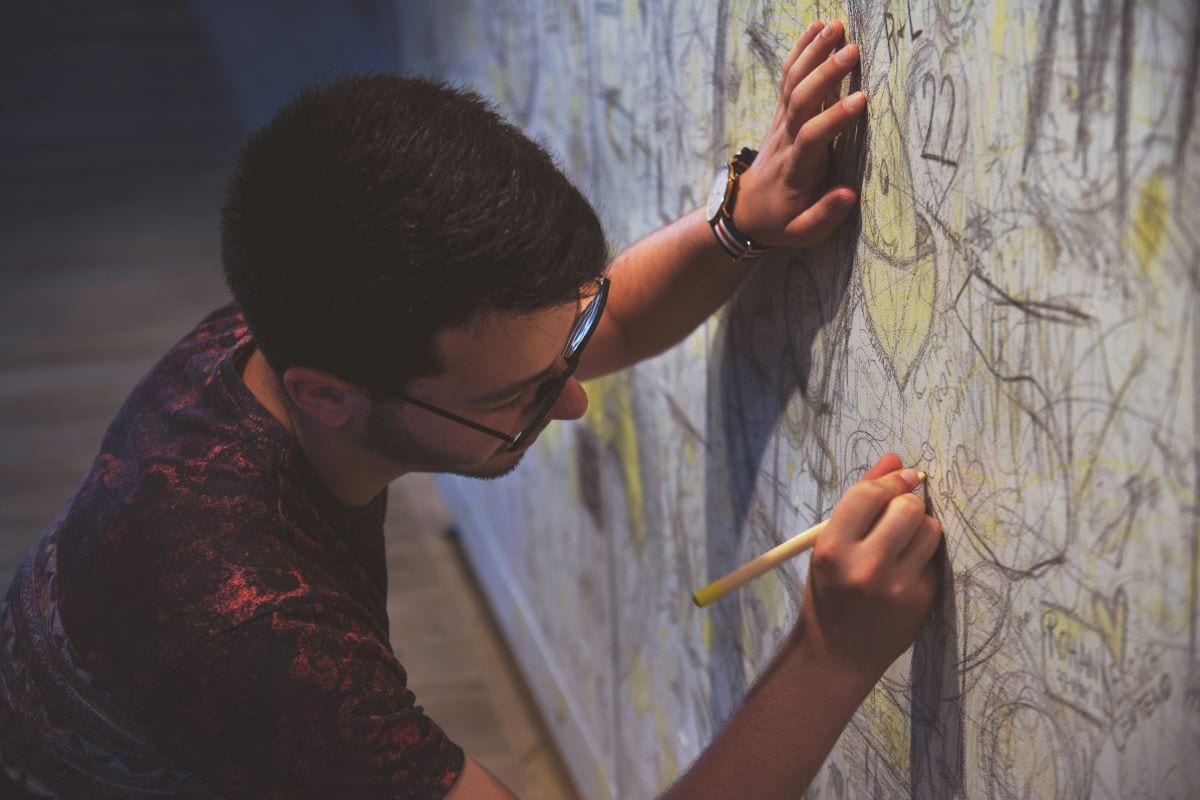
The Future of Traditional Art and Digital Art
Advancements in Artificial Intelligence
As technology continues to evolve, artificial intelligence (AI) holds the potential to revolutionize the field of digital art. AI-powered tools and algorithms are already being used to generate and manipulate digital images, enabling artists to explore new forms of creativity and expression. From algorithmic art to generative design, AI is reshaping the way artists conceptualize and create art, opening up new possibilities for collaboration and experimentation.
Virtual Reality and Immersive Technologies
Virtual reality (VR) and immersive technologies offer exciting possibilities for the future of digital art, allowing artists to create immersive experiences that transcend the limitations of traditional mediums. VR art environments, interactive installations, and augmented reality (AR) experiences are transforming the way audiences engage with art, blurring the lines between the physical and digital worlds. As VR technology becomes more accessible and affordable, we can expect to see a proliferation of immersive art experiences that push the boundaries of creativity and storytelling.
Exploration of New Mediums and Formats
The digital revolution has democratized the creation and distribution of art, enabling artists to experiment with new mediums and formats that were previously inaccessible. From digital sculptures to web-based projects, artists are embracing the freedom and flexibility of art using digital tools and platforms. As technology advances, we can expect to see a proliferation of innovative artworks that challenge traditional conventions and redefine the boundaries of artistic expression.
Digital and Traditional Art
When it comes to traditional art vs digital art, art doesn’t discriminate – at the end of the day, it’s still art. Traditional art can be time-consuming and expensive with the need to repeatedly purchase art supplies, while digital art is easier to manipulate and share. Traditional art often requires precise skills and talent, whereas digital art is often more widely accessible.
The intersection of technology and art has opened up new possibilities for creative expression and collaboration, challenging traditional notions of artistry and audience engagement.
The possibilities for digital art are limitless. Whether it’s through advancements in artificial intelligence, virtual reality, or immersive technologies, the digital revolution is reshaping the way we create, consume, and interact with art. While this conversation is often seen as an either/or, the truth is, it’s only just beginning. And with collaboration, art can become anything we want it to be.
You might also be interested in…
If you’re looking for more information or ideas on developing tech, check out Daily Mom’s Tech Section for tons of tips, tricks, and ideas!
CONNECT WITH DAILY MOM
💖 NEWSLETTER: DAILY READS IN YOUR INBOX 💖
Sign up to receive our picks for the best things to do, see and buy so you can relax and focus on more important tasks! Let us help you be the best version of yourself you can be!
BE SOCIAL WITH US
📌 LOVE IT? PIN IT!📌
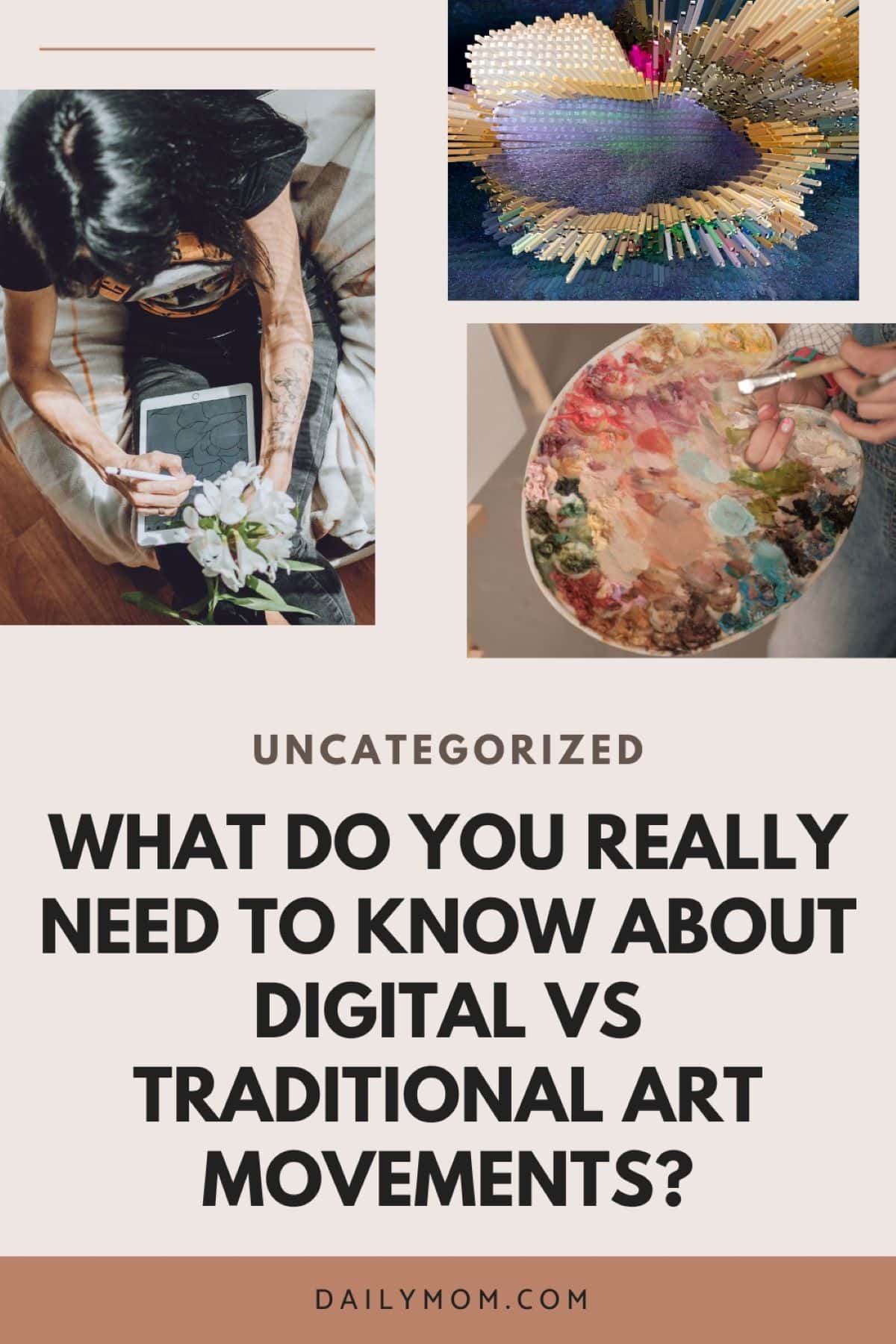
Photo Credits: Photo by note thanun on Unsplash, Photo by Gianandrea Villa on Unsplash, Photo by Brittani Burns on Unsplash, Photo by Balázs Kétyi on Unsplash, Photo by Milad Fakurian on Unsplash



































